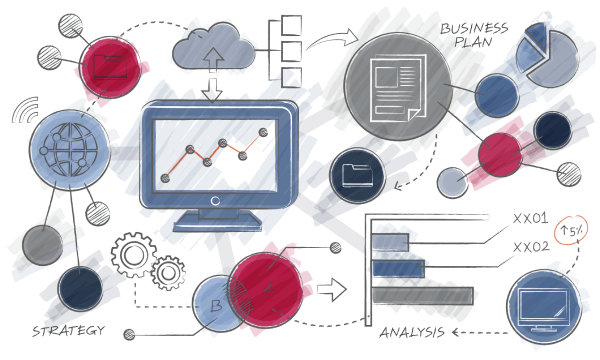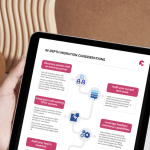Get ready to move beyond the limits of a monolithic platform and unlock the full potential of headless commerce!
We recently published a comprehensive guide for businesses migrating from legacy systems to headless commerce with Salesforce Commerce Cloud (SFCC). After some thought we realized that it would be beneficial if we took a deeper dive into the strategies and best practices for a smooth migration to headless commerce.
By following the strategies and best practices outlined below, you can successfully navigate your migration to headless commerce, whether it be with SFCC or another leading e-commerce platform.
Headless Commerce Migration Approaches with SFCC
Transitioning from Salesforce Commerce Cloud (SFCC) to a headless commerce architecture will be a complex project. It’s important to select the approach that best aligns with your business goals, technical capabilities, and budget.
- Big-Bang Replatforming: This approach involves completely replacing the existing SFCC platform with a new headless commerce solution. It offers a clean break from legacy systems, potentially simplifying future maintenance. However, it carries higher risks and costs due to its complexity and requires significant resources. The complexity of SFCC’s API structure and potential data migration challenges necessitate meticulous planning, risk mitigation strategies, and potentially custom API development to ensure compatibility with the new headless platform. This approach might be suitable for businesses with a strong understanding of headless architecture and the capacity to handle a large-scale migration.
- Progressive Migration: A phased approach allows businesses to transition to headless commerce incrementally. This involves identifying and migrating specific functionalities or customer touchpoints to the new headless platform, while maintaining the existing SFCC infrastructure for the remaining operations. This is a popular choice for SFCC users due to its manageability and lower risk. However it can extend the overall migration timeline and requires careful planning to ensure seamless integration between legacy and headless systems.
- Hybrid Migration: In this method, the business maintains the SFCC back-end while building a new headless front-end. This allows for a more seamless transition, as the existing SFCC systems can continue to power the core commerce functionality while the new headless front-end is developed and integrated. This approach can be particularly suitable for businesses that want to extend the life of their SFCC investment while gaining the advantages of headless commerce.

How to Develop a Progressive Migration Plan for Your e-Commerce
In-depth Migration Considerations
- Conduct a discovery session with an external partner to define your business objectives, priorities, and set realistic expectations with performance indicators.
- Appoint a project manager who understands your e-commerce strategy, can effectively manage the transition, and provide intuitive control over each phase of the project.
- Audit your current technology stack including your existing infrastructure and processes, to identify critical systems and potential issues.
- Integration with existing SFCC systems: Develop an integration strategy to seamlessly connect the new headless commerce solution with the existing SFCC infrastructure.
- Minimize operational disruption with a phased rollout, parallel testing, and comprehensive training for your teams. Establish clear communication channels and contingency plans to address any issues that may arise.
- Leverage headless commerce capabilities: Fully embrace everything that headless commerce has to offer by implementing personalization, omnichannel and leveraging newer technologies like Progressive Web Apps and voice-enabled shopping.
- Ensure that your team has the necessary expertise in headless architecture, front-end development, back-end integration, and SFCC configuration. Consider partnering with an experienced headless commerce agency.
- SFCC API Complexities: SFCC’s API structure can be complex, requiring careful consideration during integration with a headless platform. Ensure your team has expertise in SFCC API development and identify any potential compatibility issues beforehand.
- Data Migration Strategies: A comprehensive data migration plan is critical. This includes cleansing, transforming, and mapping data from SFCC to the new headless commerce platform, encompassing product information, customer accounts, and order history. Leverage migration tools and conduct thorough testing to minimize data integrity issues.
Tools and Resources for Migration
A successful migration will depend not only on strategy but also on leveraging the right tools and resources. These can help with development, data management, API integration, and project management. Here are the key tools and resources to facilitate the migration from Salesforce Commerce Cloud to a headless commerce architecture:
Development Frameworks
- React: A popular JavaScript library for building user interfaces, well-suited for developing the front-end of a headless commerce solution.
- Vue.js: Another widely-used JavaScript framework for creating dynamic user interfaces, offering a flexible and efficient approach to headless commerce development.
Headless Solutions
Headless CMS Platforms
- Contentful: A popular API-first headless CMS that can be integrated with SFCC and other commerce platforms.
- Contentstack: Another leading headless CMS that offers seamless integration with SFCC.
Headless Commerce Platforms
- Commercetools: A modern, API-first headless commerce platform that can be used to migrate from SFCC.
- Elastic Path: An enterprise-grade headless commerce solution that offers a guided migration path from SFCC.
- BigCommerce: A headless commerce platform that can be integrated with SFCC and other systems.
Headless frontends
- Front-Commerce: A proprietary React based headless frontend solution with PWA capabilities, that is agnostic to the backend e-commerce platform.
- Alokai: A Vue based headless frontend solution that is also agnostic to the backend e-commerce platform.
SFCC specific API Management Solutions
- Salesforce Managed Runtime: Salesforce’s tool for managing the runtime environment and APIs for headless commerce implementations.
- API gateways: Tools like Apigee, Amazon API Gateway, or Azure API Management can help streamline the integration of SFCC with other systems in a headless architecture.
When selecting the right tools for your migration, consider the following factors:
- Evaluate your business requirements, including the level of customization needed, integration needs, and scalability requirements.
- Assess the technical expertise available to you to ensure a smooth transition to the selected tools and frameworks.
- Ensure compatibility with your existing ecosystem by selecting tools and platforms that seamlessly integrate with SFCC and other systems in your technology stack.
- Consider the total cost of ownership, including licensing, implementation, and ongoing maintenance, to ensure that the chosen solution aligns with your budget and resources.
Best Practices for a Smooth Migration
Transitioning from a traditional Salesforce Commerce Cloud (SFCC) platform to a headless commerce architecture can be a complex undertaking, but following these best practices can help ensure a seamless migration:

Strategic Planning and Management
- Define Business Goals: Clearly articulate your business objectives for the migration, such as improving customer experiences or expanding sales channels. This will help guide the selection of the right migration approach and tools.
- Evaluate Your SFCC Setup: Conduct a thorough audit of your existing SFCC infrastructure, including your product catalog, customer data, and integrations with other systems. This will inform the data migration strategy and integration requirements.
- Choose the Appropriate Migration Approach: Evaluate the different migration methods and select the one that best aligns with your business needs, technical capabilities, and budget.
- Develop a Clear Roadmap: Create a detailed project plan that outlines the migration timeline, key milestones, and responsibilities for your cross-functional team. Incorporate contingency plans to address any unexpected challenges.
- Establish Communication Channels: Ensure transparentand frequent communication with all stakeholders, including IT, marketing, and customer service teams, to keep them informed about the progress and any changes during the migration.
- Prioritize Data Security: Implement robust data migration and integration strategies to ensure the seamless and secure transfer of customer, product, and order information from SFCC to the new headless platform.
Ensuring User Adoption
- Address User Concerns: Proactively identify and address any potential user concerns or resistance to the migration, such as changes in workflows or user interfaces. Provide comprehensive training and support to help stakeholders adapt to the new headless commerce system.
- Leverage Headless Commerce Capabilities: Fully embrace the flexibility and agility offered by headless commerce to enhance the customer experience. This may include implementing personalization, omnichannel integrations, and leveraging emerging technologies like Progressive Web Apps (PWAs) and voice-enabled shopping.
- Assemble the Right Implementation Team: Ensure that your migration team has the necessary expertise in headless architecture, front-end development, back-end integration, and SFCC configuration. Consider partnering with an experienced headless commerce implementation provider to supplement your internal capabilities.
Common Challenges and Strategies:
- Data Complexity: Develop a comprehensive data migration plan that includes cleansing, transforming, and mapping data from SFCC to the new headless commerce platform. Thoroughly test the data migration process to identify and address any issues.
- API Integration: Establish a robust integration strategy to seamlessly connect the new headless commerce platform with the existing SFCC infrastructure, ensuring a cohesive customer experience. Leverage API management solutions to streamline the integration process.
Headless Commerce is the Future of e-Commerce
Altogether, headless commerce with Salesforce Commerce Cloud presents an opportunity for businesses to break free from the limitations of legacy systems. Transitioning to headless commerce with Salesforce Commerce Cloud is not just a technological upgrade; it’s a strategic move to future-proof your e-commerce operations and stay ahead. By strategically planning your migration journey, leveraging best practices, and embracing the benefits of headless commerce, you can position your business for sustained growth.

